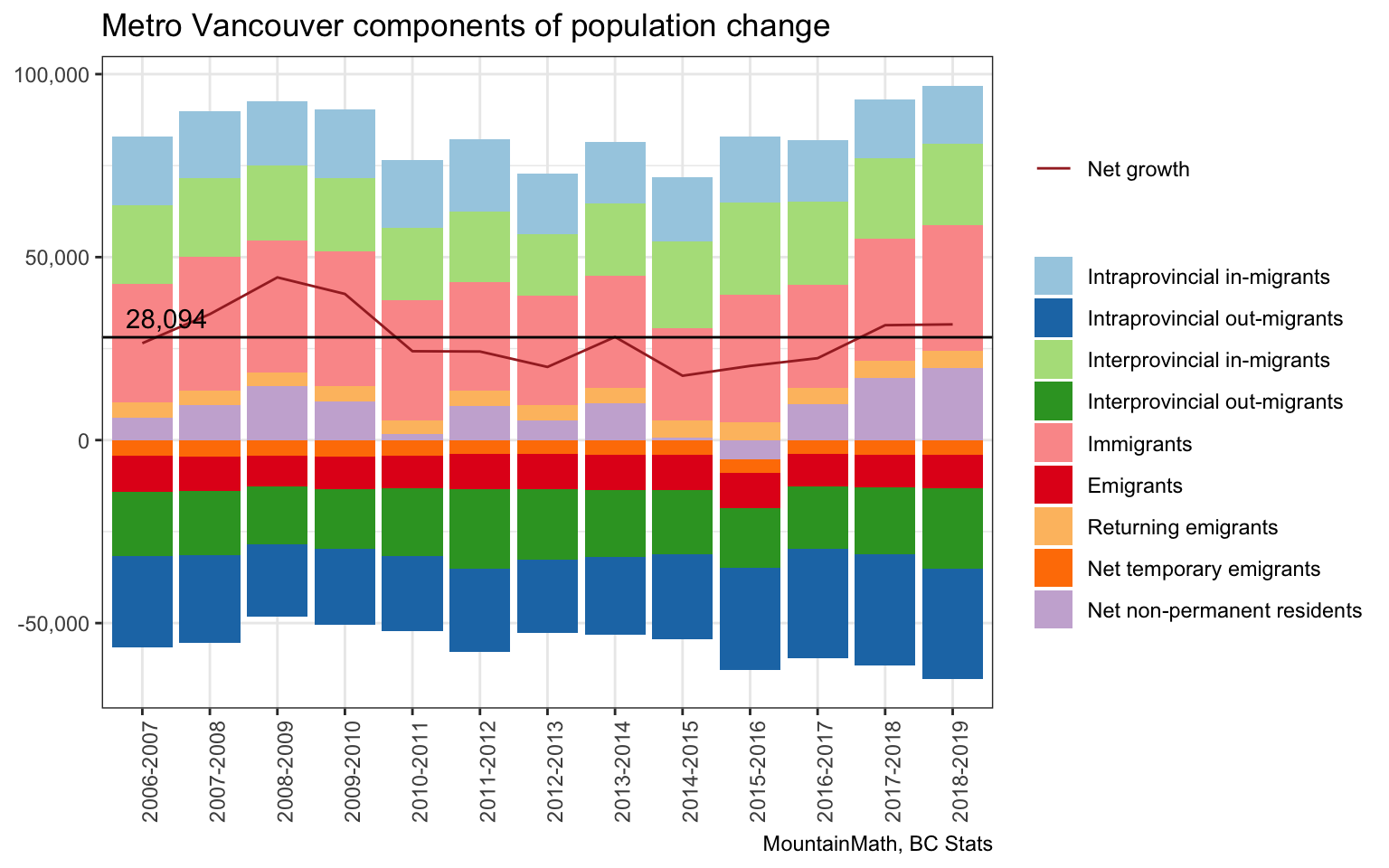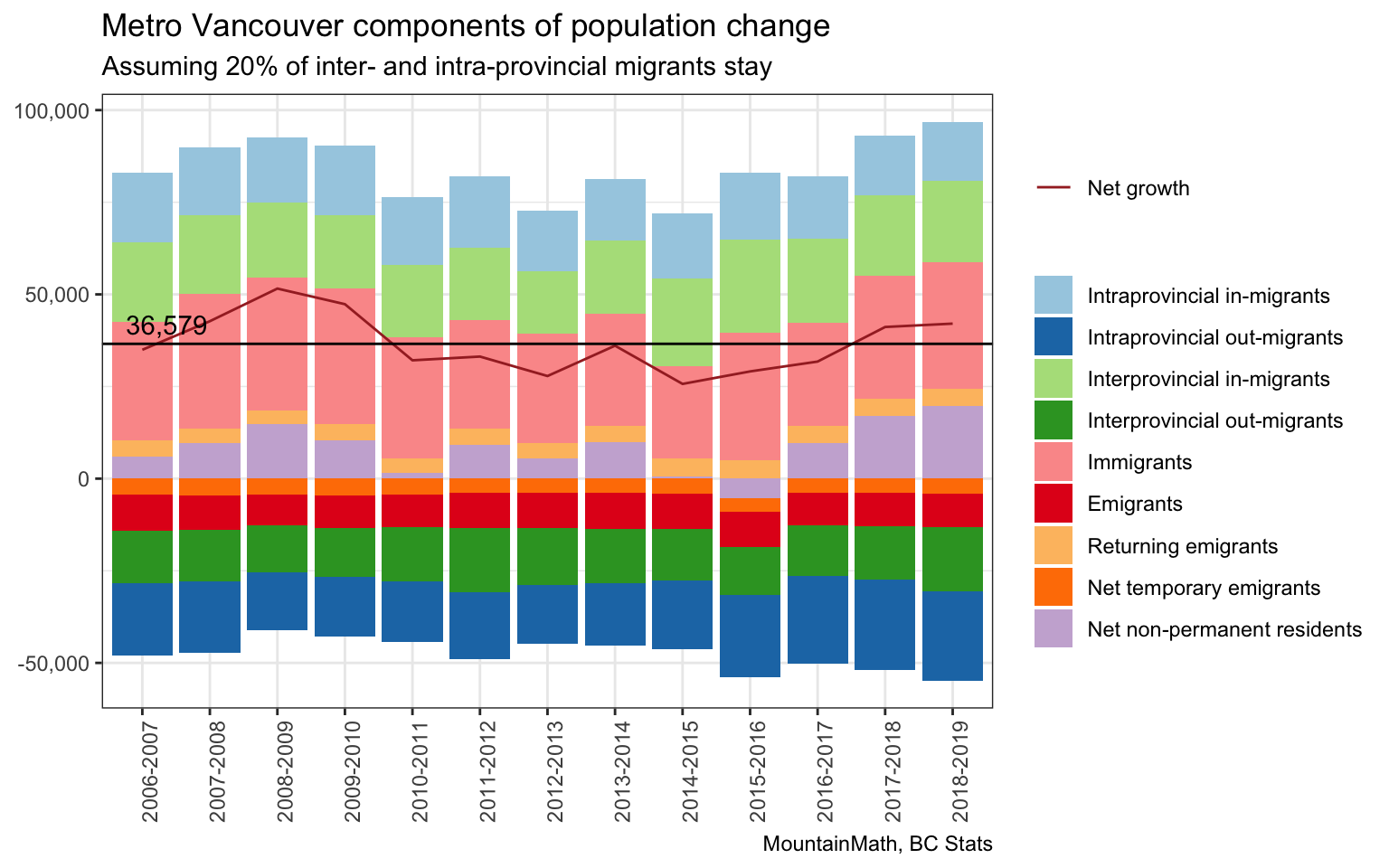(Joint with Nathan Lauster and cross-posted at HomeFreeSociology)
Do people select cities from diverse alternatives? Or do cities select residents from diverse flows of people?
The answer is pretty much: both.
People can look around and consider where they want to end up. And cities, through municipal policies, can and do work to select their residents. EXCEPT cities can’t do this directly. At least across North America, cities generally aren’t allowed to establish and maintain their own immigration policies. When they try to do so, the courts shoot them down, because both Canada and the USA enshrine the right of people to move within their borders. Cities can’t stop them. But cities have a big role in deciding how much room to make for people. And they also generally get to decide what form any added room should take. Many, for instance, only allow the most expensive forms of new housing, like single-family detached on large lots, selecting for wealthier residents. So that’s how cities select their residents.
The fact that it’s a two-way selection process, with both people and cities doing the selecting, makes it quite difficult to forecast something like future housing needed to prepare for a city’s population growth. Yet this is what cities, including Vancouver, are often tasked with doing by way of justifying their policies.
One way of going about this is to argue that past population growth is our best estimate to forecast future housing demand. This is a bad argument on many levels as we have explained at length before. In expensive gateway cities, like Vancouver, this often gets accompanied by nativist notions that population growth is driven almost entirely by international migration as net domestic migration is small. But net estimates obscure the actual size of flows, where local and domestic movers predominate and make up the majority of those occupying new housing.
More troubling is the implicit logic that elevates domestic in-migrants over international in-migrants, providing only the former a legitimate claim to the place freed up by a domestic out-migrant. So far, freedom for movement in Canada extends to immigrants, as it should. And not all immigrants come from outside of Canada. Increasingly non-permanent residents turn into immigrants (including both of us!) This simply results in a drop in net non-permanent residents and an increase in immigrants in these stats, without anyone actually moving. This speaks to the complexity of how cities select their residents from diverse flows of people. A thought experiment might be helpful to better illuminate how it works in practice.
Creating room for people to stay
First let’s look at past population growth. BC Stats splits this up neatly into several sub-categories, which we can think of as flows.

Net population growth for Metro Vancouver has hovered around 28k people a year. But it’s not like this is a one-way flow, about 50k people leave Metro Vancouver every year and somewhere around 75k people come. Some people have a really hard time making room for newcomers. But maybe people are more sympathetic to people leaving. Of course many people leave Metro Vancouver for greener pastures, a better job, move for university or other personal reasons. But the “Leaving Vancouver” letters (practically a genre at this point) are testament that not all people moving away think of their moves in positive terms. Many feel squeezed out. People keep talking about friends that left because they could not find adequate housing in Vancouver.
So let’s say, for the sake of argument, that one out of five people moving out of Metro Vancouver to elsewhere in Canada really wanted to stay but could not make it work. And, of course, we already know that feeling “forced” to move is strikingly common in Vancouver, even for those who remain. So let’s say we are sympathetic to the people who leave town and would actually like to insure enough room for them to stay. What would that take?
That’s easy to check, all we need to do is reduce the size of the inter- and intra-provincial out-migrant buckets in the above graph by 20%.

The net effect is that fewer people would have been leaving Metro Vancouver, while the same people came. And our population growth went up by about 30%. Which means that we should have built 30% more housing than we did over the years to make that possible.
Now some readers will argue that that’s not how things work. If we had built 30% more housing, that does not mean that one in five of the people that moved would have gotten to stay. Some of that housing would have been taken up by people that wanted to move to Metro Vancouver but could not find adequate housing, but with more housing they could have made it work and would have out-bid some of those that were hoping to stay.
And with more housing available, some new households might be created that might otherwise not exist. Maybe someone will move out of their parents place earlier and take up one of those new units without adding to population growth at all. And in return one of the 1 in 5 people that had hoped to stay might still end up feeling forced to leave again.
And people arguing that are of course exactly right. That’s the point of this exercise, housing and population growth are endogenous. Which is kind of a fancy way of saying that people select cities from diverse alternatives AND that cities select residents from diverse flows of people.
Empty homes - the ultimate anti-housing red herring
Here in Vancouver, those resisting making room for more people to stay and arrive like to point toward a supposed mismatch of housing growth to household growth between 2001 and 2016, supposedly leaving lots of empty homes. This time window is of course chosen deliberately to include the change in census methods 2001-2006, and this talking point mostly goes away when properly accounting for that. To avoid adding homes people will still point to some vague notion of dwellings being left empty, even though we have better data on empty homes than ever before and there are very few problematic cases paying the Empty Homes Tax or Speculation and Vacancy Tax left in the region.
How should we do population projections?
So given the endogeneity issues: how should we be doing future population projections? In high demand areas like Metro Vancouver we should start from housing growth. That’s what cities can control. How many condos will be built? How many rental homes? How many non-market homes? How many infill homes? And given a scenario of housing growth, we can model what population growth might look like. How many people would move here from elsewhere in BC? How many from elsewhere in Canada? How many from outside the country? How many people would move away? It’s not an exact science, but demographers can build decent models once we know how much housing is being built and how cities are trying to select their residents. And the public can look at different scenarios of housing growth and the resulting scenarios of population change and use that to have a more informed discussion about where they want the city to go as well as who they want to enable to stay.
As usual, the code for this post is available on GitHub for anyone to reproduce or adapt for their own purposes.
Reuse
Citation
@misc{keeping-the-leavers.2020,
author = {{von Bergmann}, Jens and Lauster, Nathan},
title = {Keeping the {Leavers}},
date = {2020-08-27},
url = {https://doodles.mountainmath.ca/posts/2020-08-27-keeping-the-leavers/},
langid = {en}
}
